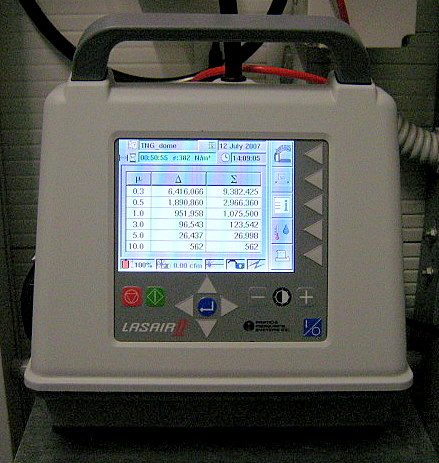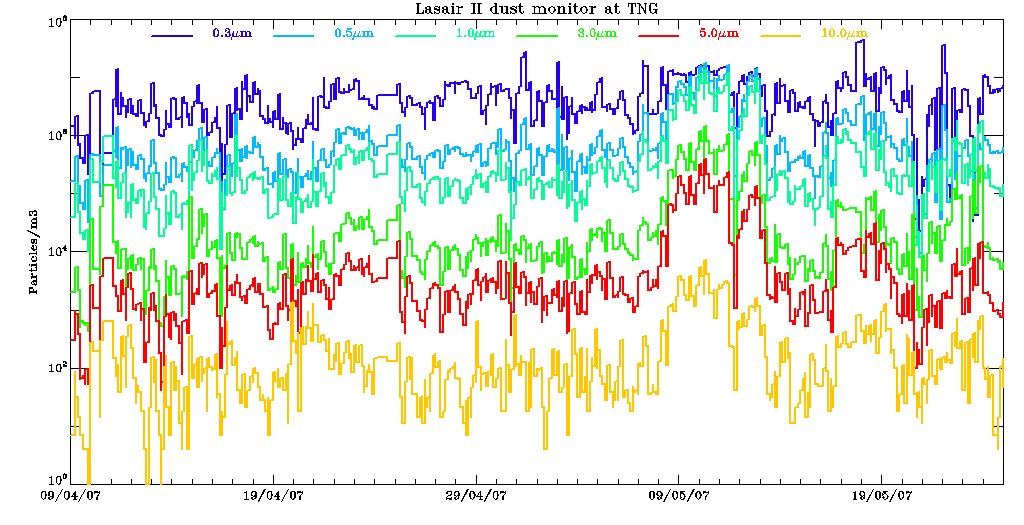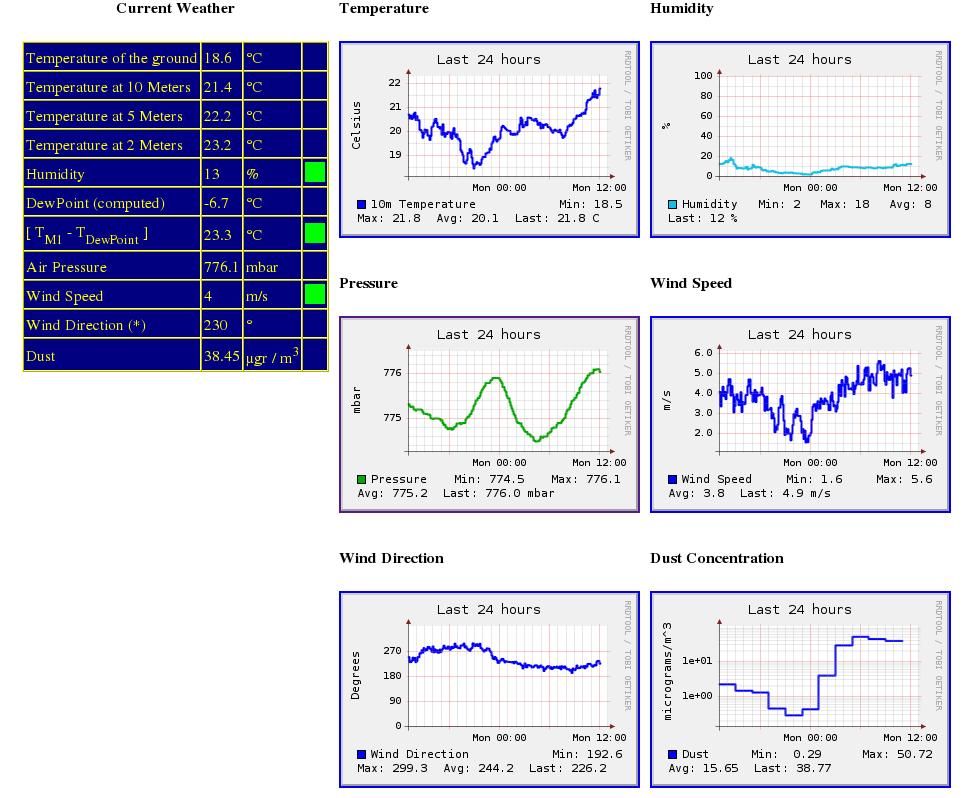Dust particle counter on line
A new fully automatic particle counter has been installed at the TNG site. From the TNG Weather Panel web page everyone has access to the concentration of dust measured on the outside of the TNG dome. The particle counter is a Lasair II, model 310B, made by Particle Measuring System, Inc. (PMS, Inc. in the following) and it means an important upgrade as respect to the previous particle counter (Abacus TM 301, also from PMS, Inc.) that has been in operation at TNG since the year 2001. The particles size sensitivity is now for 0.3, 0.5, 1.0, 3.0, 5.0 and 10.0 µm; furthermore the system can be controlled via ethernet and data are easily downloaded to the archive.

Figure1: A picture of the particle counter installed at TNG.
Measurements are performed every 2 hrs (starting at noon). After 10 minutes purging the air is intaken at a flow rate of 1cubic feet per minute and the concentration of particles is determined from scattering. The cumulative density of dust in µg/m3 is available on the web page after few minutes.

Figure2: A sample of a plot of the number of particles per cubic meter,
separated by particle size. An event of calima is visible around May,
10th, where the number of particle has a huge increase (∼ 100
times) especially for the bigger ones (3 to 10 µ m in size).

Figure3: A screenshot of the TNG weather page control panel

Figure4: An example of plot that is available in the page of dust plots.
In order that all data are clearly visible a logarithmic scale is used.

